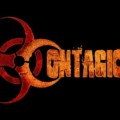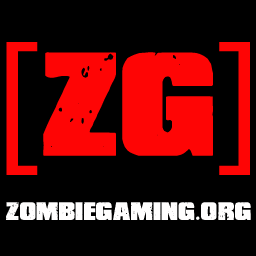Performance Optimization Apps
 Razer Cortex: Game Booster
Razer Cortex: Game Booster
Designed for higher FPS and less lags!
Game Booster is capable of delivering the best gaming experience to you even if you have an old PC. One-click to boost PC performance is not enough, Game Booster 3 also allows you to tweak your system for top PC performance. By temporarily shutting background processes and unnecessary Windows services, cleaning RAM, and intensifying processor performance, Game Booster 3 concentrates every little system resource for gaming only. Game booster is compatible with all modern anti-cheat gaming services.
CCle aner
aner
Designed for general PC optimization to help with lag, performance and stability
CCleaner is one of the most popular freeware PC cleaner out on the market. This free and professional application will provide a unmatched review of your overall system configuration and automatically clean up and optimize your entire system. Not only is will your system be rid of unneeded temporary cache file, but its Registry Cleaner will optimize the way which your PC runs.
 TCP Optimizer 4
TCP Optimizer 4
Designed for higher network throughput and less lags!
The SG TCP Optimizer is a free, easy Windows program that provides an intuitive interface for tuning and optimizing your Internet connection. There is no installation required, just download and run.
The program can aid both the novice and the advanced user in tweaking related TCP/IP parameters in Windows, making it easy to tune your system to the type of Internet connection used. The tool uses advanced algorithms, and the bandwidth*delay product to find the best TCP Window for your specific connection speed. It provides for easy tuning of all related TCP/IP parameters, such as MTU, RWIN, and even advanced ones like QoS and ToS/Diffserv prioritization. The program works with all current versions of Windows, and includes additional tools, such as testing average latency over multiple hosts, and finding the largest possible packet size (MTU).
The TCP Optimizer is targeted towards broadband internet connections, however it can be helpful with tuning any internet connection type, from dial-up to Gigabit+ 🙂 It is completely free, requires no installation, and has been downloaded over 3 Million times.
If you need help with the program, check the TCP Optimizer documentation, read our broadband tweaking articles, the Optimizer FAQ, and/or visit our Forums. The program can be freely (re)distributed, as long as you give us proper credit as the author, and it is not sold for profit.
What is a Spray?
If you are new to Valve Source engine gaming, this is a cool little feature. A spray is just that, it is a image file that is stalled in the game that allows you to place that image on a floor or wall while in gameplay. All [ZG] ZPS servers permit sprays pending that the spray aligns to ZG community rules. Zombies do not have the ability to use sprays.
How do I Create a Spray?
The following tutorial will walk you through creating the two key files (.vmt and .vtf) needed to use sprays. This tutorial provides a step by step on how to create a transparent spray on Team Fortress 2 which will work on ZPS:
https://steamcommunity.com/sharedfiles/filedetails/?id=121115553
How do I Enable Sprays on ZPS?
Please note that not all Zombie Panic servers allow for players to use sprays. To enable sprays, please do the following:
- Enable Spray Check-Box
- Go to Options -> Multiplayer -> Advanced
- Ensure that the check-box next to “Disable Sprays” is unchecked
- Add your Custom Spray
- Copy your .vmt and .vtf file to the following directory:
- C:Program Files (x86)SteamSteamAppscommonSource SDK Base 2007zpsmaterialsVGUIlogos
Troubleshoot Game Performance (Basic Users)
If you are having general issues with Zombie Gaming featured games even after going through all of the performance tips, there are a few things that you can do to fix issues with your visuals and gameplay. Especially for instances of seeing purple checkerboards, models missing, crashing or general slowness, here are some things that you can check:
Install the Latest Video Card Drivers
Your gaming system will either be an AMD (Radeon) or Intel (nVidia) based graphics card. Download the automatic driver detector for the graphics card type that you have:
AMD (Radeon)
Intel (nVidia)
Verify Integrity of Game Files

This tutorial is taken from the Steam support page:
- Restart your computer and launch Steam
- From the Library section, right-click on the game and select Properties from the menu
- Select the Local files tab and click the Verify integrity of game files button
At this time, Steam will verify the game’s files. This process may take several minutes. Please note that in many instances, Steam will report that One or more files may fail to verify, this is normal for most Steam games. You can safely ignore this message.
Troubleshoot Game Performance (Advanced Users)
fps – Frames per Second
ping – Network Latency
loss – % of incoming lost data packets
choke – % of outgoing lost data packets
FPS
This is defined as the number of frames that can be displayed on your game per second. This is many times also known as your current frame rate. The higher fps, the better:
10fps – Jerky, continual lag and jitter
20fps – Fair, Intermittent lag and jitter
30fps – Playable, infrequent lag and jitter
60fps – Good, never to no lag and jitter
100fps – Perfect, smooth gameplay
PING
Network latency measured in milliseconds. The time it takes for a data packet to travel from source to destination and back (round trip). The lower the ping, the better:
500ms-1000ms – 80-100% lag, unplayable
300ms-500ms – 50-80% lag, bad game play
200ms-300ms – 20-50% lag, fair game play
50ms-200ms – 0-10% lag, good game play
0ms-50ms – 0% lag, smooth game play
LOSS
The percentage of incoming data packets that are lost. Optimally, you want to keep this to “0“
CHOKE
The percentage of outgoing data packets that are lost. Optimally, you want to keep this to “0“
Net Graph
With now understanding the meaning behind fps, ping, loss and choke, one can now start looking at real time data to determine where performance issues may exist. The Source engine offers a couple of tools to check your client connection speed and quality. The most popular one is the net graph, which can be enabled with net_graph 2 (or +graph). Incoming packets are represented by small lines moving from right to left. The height of each line reflects size of a packet. If a gap appears between lines, a packet was lost or arrived out of order. The lines are color-coded depending on what kind of data they contain.
Under the net graph, the first line shows your current rendered frames per second, your average latency, and the current value of cl_updaterate. The second line shows the size in bytes of the last incoming packet (snapshots), the average incoming bandwidth, and received packets per second. The third line shows the same data just for outgoing packets (user commands).
Enable Net Graph
How to enable, control and disable Net_Graph:
To turn on the netgraph, type net_graph 1 (2 and 3 have additional data) on the console. To turn it off, type net_graph 0 at the console.
The netgraph may be positioned on the left, middle or right of the screen by setting net_graphpos to 0, 1, or 2 as needed.
You can adjust the size of the netgraph by setting the net_graphwidth CVAR.
Zombie Panic! Source Mapping Guide
Hammer is the primary tool used to create ZPS maps. This is a tutorial on how to Configure Hammer to map for Zombie Panic! Source:
Hammer Configuration
Mapping Guide
Part 1 – Basics, lobby and random item placement (by MapMan)
Part 2 – Objective mode and filters (by Pingu)
Part 3 – Dynamic zombie spawns and Random objective items (by Pingu)
Where Can I find ZPS Maps?
Check out both the Zombie Panic forums and Gamebanana. Zombie Gaming also has its archive of ZPS maps as well:



